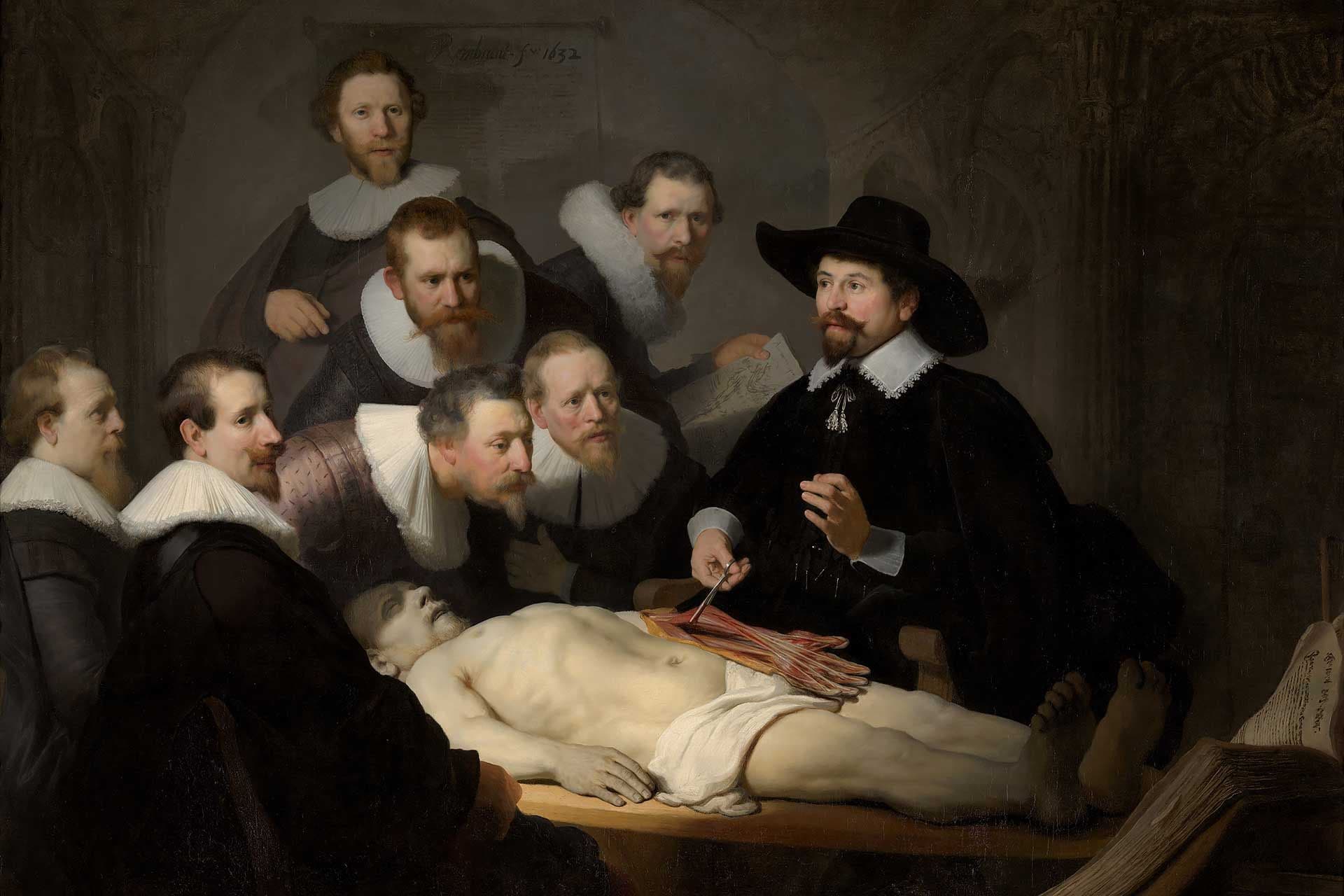The Life Behind the Brush of Rembrandt van Rijn
Mahacaraka® Press
Few artists in Western history have captured the human experience with the emotional depth and technical mastery of Rembrandt van Rijn. Born in 1606 in Leiden, he rose to prominence during the Dutch Golden Age. A time of wealth, trade, and cultural achievement. Renowned for his portraits, religious scenes, and masterful use of light and shadow, Rembrandt became one of the most influential figures in European art, celebrated for his ability to reveal the inner lives of his subjects.
His father, a miller, and his mother, a baker’s daughter, ensured that young Rembrandt received a solid education. After a brief stint at Leiden University, he apprenticed under the painter Jacob van Swanenburgh, and later with the more prominent Pieter Lastman in Amsterdam. By the early 1630s, he had established himself as a successful portraitist, attracting commissions from wealthy burghers and civic leaders. His early works already hinted at the chiaroscuro style that would become his hallmark, dramatic contrasts between light and shadow not merely for visual effect, but to explore psychological depth.
Among his most celebrated early paintings is The Anatomy Lesson of Dr. Nicolaes Tulp (1632), a group portrait that broke conventions by presenting a cadaver dissection as a theatrical yet scholarly moment. The composition, rich in symbolic detail, reflected both the intellectual ambition of the Dutch Republic and Rembrandt’s own command of narrative storytelling. His ability to animate static scenes with lifelike intensity became a defining feature of his career.
Throughout the 1640s and 1650s, his style grew more expressive, his brushwork looser, and his palette earthier. Perhaps the most iconic work from this period is The Night Watch (1642), formally titled Militia Company of District II under the Command of Captain Frans Banninck Cocq. This monumental painting, often misunderstood as a nocturnal scene due to the darkened varnish applied over time, revolutionised group portraiture. Rather than static figures lined up in rows, Rembrandt introduced movement, tension, and narrative complexity, giving life to what could have been a rigid civic commission.

However, the painting marked a turning point. The critical reception was mixed, and coupled with the death of his beloved wife Saskia in 1642, Rembrandt’s fortunes began to decline. Financial mismanagement, failed investments, and changing tastes led to his bankruptcy in 1656. His possessions — including a significant art collection and printing press — were auctioned off. Yet, artistic brilliance never waned. In the depths of personal loss and public obscurity, he produced some of his most introspective and emotionally rich works.
His self-portraits, numbering over 80, serve as an extraordinary visual diary. From confident young artist to weathered old man, they map not only physical ageing but the psychological evolution of an individual grappling with success, grief and survival. Each gaze into the mirror was an act of inquiry — what does it mean to be human, to suffer, to endure?
Religious scenes also took on greater intimacy and pathos in his later years. Paintings such as The Return of the Prodigal Son and Bathsheba at Her Bath show figures not as idealised icons but as fragile, fallible beings. His interpretation of biblical stories reflected a deep empathy rather than doctrinal certainty, which may explain the universal appeal of these works across cultures and centuries.
Rembrandt was also a prolific printmaker, revolutionising the medium with an experimental approach that combined etching, drypoint and engraving. His prints circulated widely during his lifetime and helped cement his international reputation. Unlike many of his contemporaries, he used print not merely to reproduce paintings but as an independent form of expression. His studies of beggars, workers, and biblical figures possess an immediacy and spontaneity that rival his oil paintings.

Despite dying in relative obscurity on 4 October 1669, buried in an unmarked grave in Amsterdam’s Westerkerk, his reputation underwent a major revival in the 18th and 19th centuries. Collectors, historians and artists began to re-evaluate his achievements, placing him alongside the likes of Leonardo da Vinci and Michelangelo as a towering figure in the history of Western art.
Today, his works are held in the world’s most prestigious museums — the Rijksmuseum in Amsterdam, the Louvre in Paris, the Hermitage in St Petersburg, and the National Gallery in London. His influence continues to ripple through the art world, inspiring painters, photographers, and filmmakers alike. From the way he portrayed light to how he captured emotion, his techniques remain a benchmark of artistic excellence.
Modern art historians praise his ability to render psychological complexity with minimal means. Painters like Francis Bacon and Lucian Freud have cited him as a major influence. Meanwhile, exhibitions dedicated to his life draw global audiences, testifying to the enduring magnetism of his work. In a world saturated with digital images, his portraits remind viewers of the weight of silence, the intimacy of stillness, and the power of a single gaze.
Ultimately, Rembrandt’s legacy is not just his remarkable output but his unwavering commitment to truth in art. He was not concerned with flattery, trend, or even comfort. Instead, he sought to capture life in all its flawed magnificence — the solemn, the grotesque, the beautiful, and the broken. That pursuit, as urgent today as it was in 17th-century Amsterdam, continues to echo across centuries.